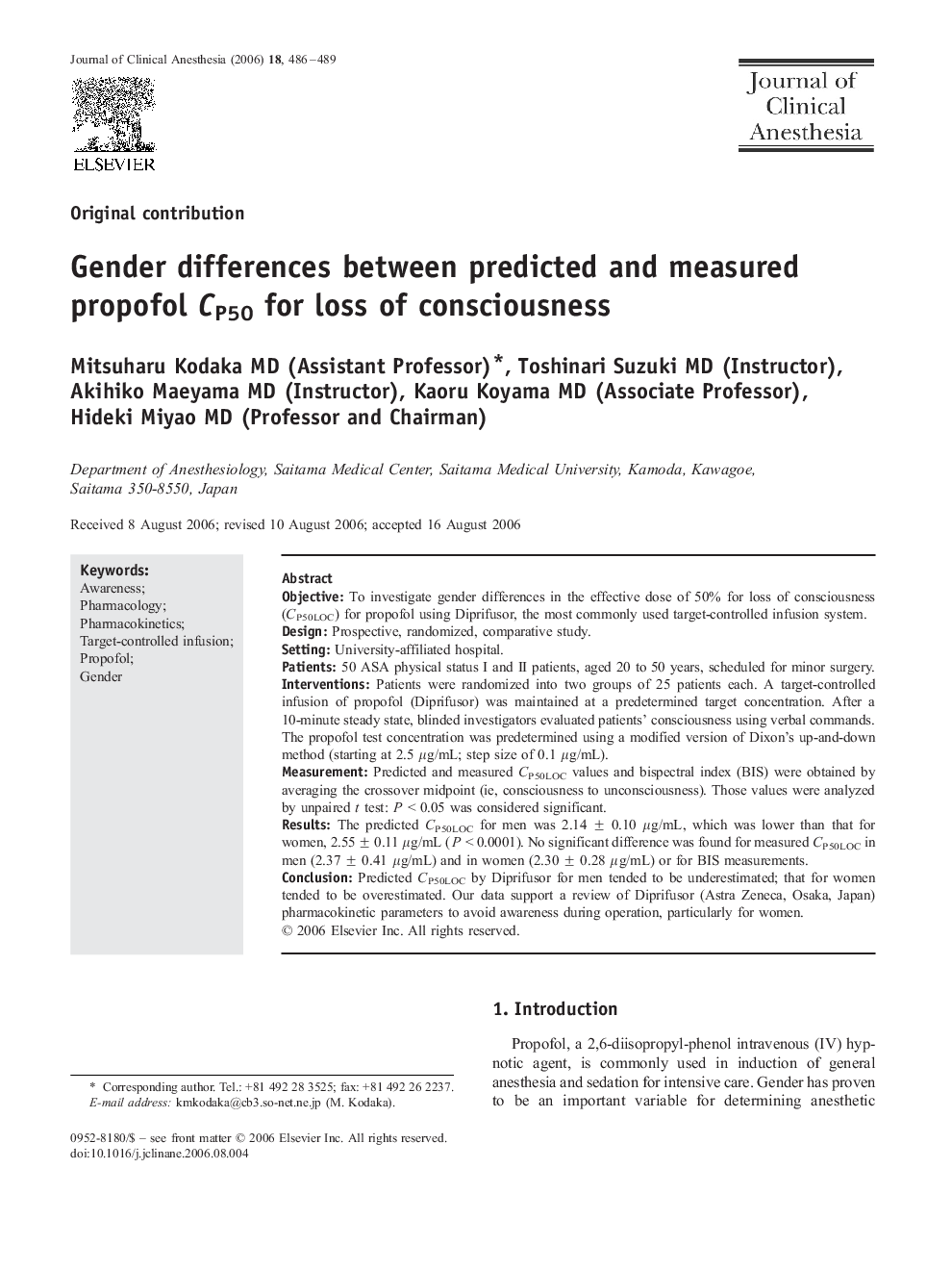| Article ID | Journal | Published Year | Pages | File Type |
|---|---|---|---|---|
| 2763732 | Journal of Clinical Anesthesia | 2006 | 4 Pages |
ObjectiveTo investigate gender differences in the effective dose of 50% for loss of consciousness (CP50LOC) for propofol using Diprifusor, the most commonly used target-controlled infusion system.DesignProspective, randomized, comparative study.SettingUniversity-affiliated hospital.Patients50 ASA physical status I and II patients, aged 20 to 50 years, scheduled for minor surgery.InterventionsPatients were randomized into two groups of 25 patients each. A target-controlled infusion of propofol (Diprifusor) was maintained at a predetermined target concentration. After a 10-minute steady state, blinded investigators evaluated patients' consciousness using verbal commands. The propofol test concentration was predetermined using a modified version of Dixon's up-and-down method (starting at 2.5 μg/mL; step size of 0.1 μg/mL).MeasurementPredicted and measured CP50LOC values and bispectral index (BIS) were obtained by averaging the crossover midpoint (ie, consciousness to unconsciousness). Those values were analyzed by unpaired t test: P < 0.05 was considered significant.ResultsThe predicted CP50LOC for men was 2.14 ± 0.10 μg/mL, which was lower than that for women, 2.55 ± 0.11 μg/mL (P < 0.0001). No significant difference was found for measured CP50LOC in men (2.37 ± 0.41 μg/mL) and in women (2.30 ± 0.28 μg/mL) or for BIS measurements.ConclusionPredicted CP50LOC by Diprifusor for men tended to be underestimated; that for women tended to be overestimated. Our data support a review of Diprifusor (Astra Zeneca, Osaka, Japan) pharmacokinetic parameters to avoid awareness during operation, particularly for women.
